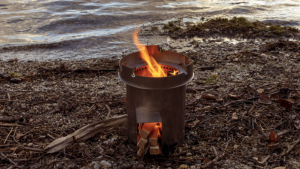
The Tate Modern in London is hosting the UK’s largest exhibition of Yoko Ono’s work until 1 September 2024. Titled Yoko Ono: Music Of The Mind, the exhibition traces Ono’s radical approach to art, language and participation, from her early ‘instruction’ pieces to her recent, large-scale installations.
Covering seven decades of her expansive practice from 1955 to today, Yoko Ono: Music Of The Mind includes more than 200 works including instruction pieces, scores, installations, films, music and photography. During her lifetime, Ono moved between Japan, the US and the UK – where she met her husband and longtime collaborator John Lennon – before settling in New York in 1971. Loosely following this chronology, the exhibition highlights connections between recurring ideas and themes such as peace, freedom and limitlessness that appear throughout her career.
The exhibition takes its title from the artist’s desire to stimulate the imagination. As Ono notes: ‘The only sound that exists to me is the sound of the mind. My works are only to induce music of the mind in people … In the mind-world, things spread out and go beyond time.‘ The Tate explains that Ono’s exhibition invites the viewer to realise her artworks, to construct paintings in their minds, perform inside a bag, play a game of chess, and share their memories and wishes. ‘Most importantly, Ono invites you to imagine. This collective call to action is a provocation to change the world, one wish at a time,’ it says.
One particular piece titled ‘Wish Tree’ (first realised in 1996) greets visitors at the entrance to the exhibition and invites them to contribute their own individual wishes for peace, while a new iteration of ‘My Mommy Is Beautiful’, first realised in 2004, features a 15-metre-long wall of canvases to which visitors can attach photographs of their mother and share personal messages.
The show traces the development of her practice and explores some of Ono’s most talked about and powerful artworks and performances, including ‘Cut Piece’ (1964), where people were invited to cut off her clothing, and her banned ‘Film No.4 (Bottoms)’ (1966-67) which she created as a ‘petition for peace’.
Read more.






